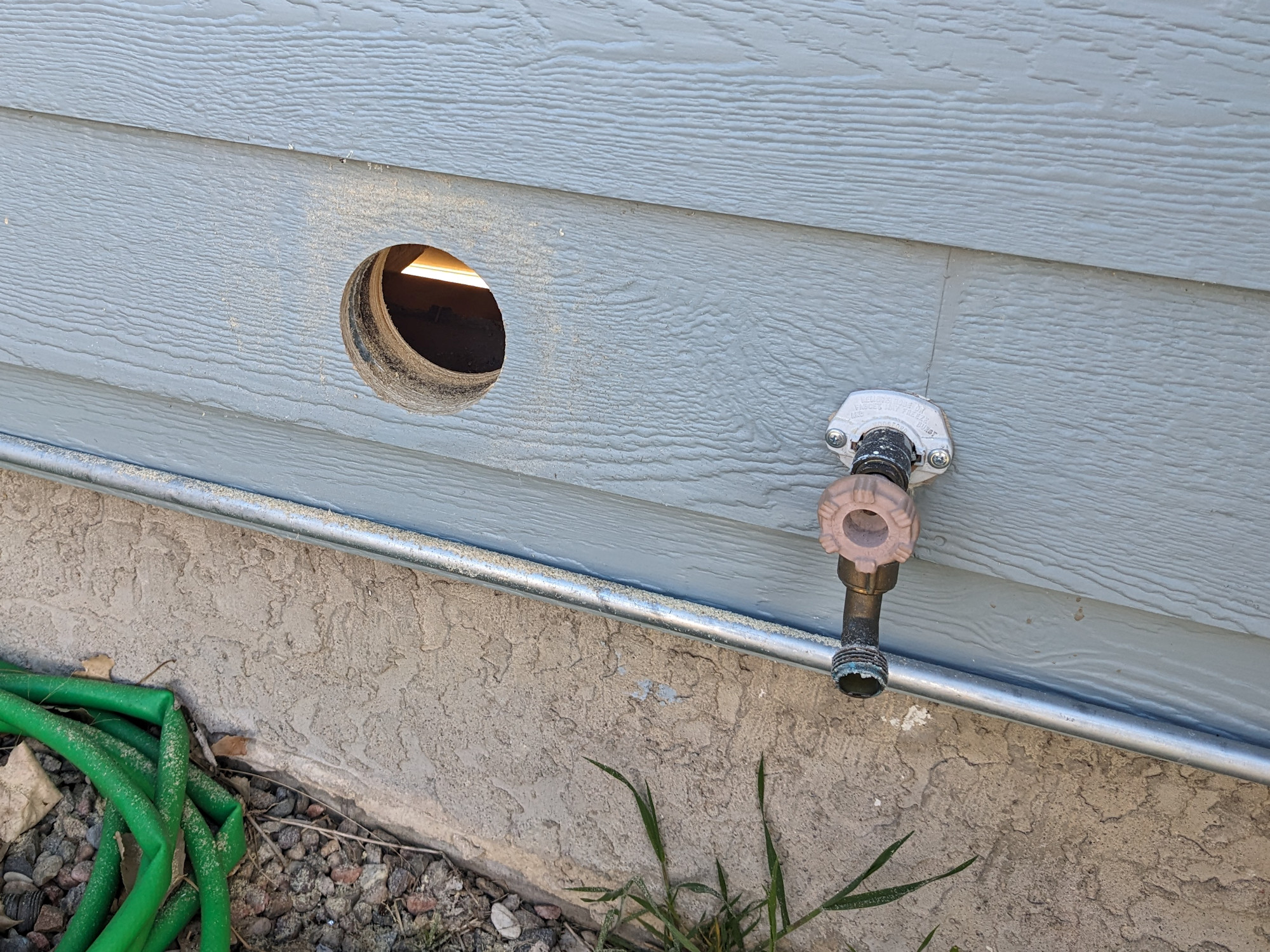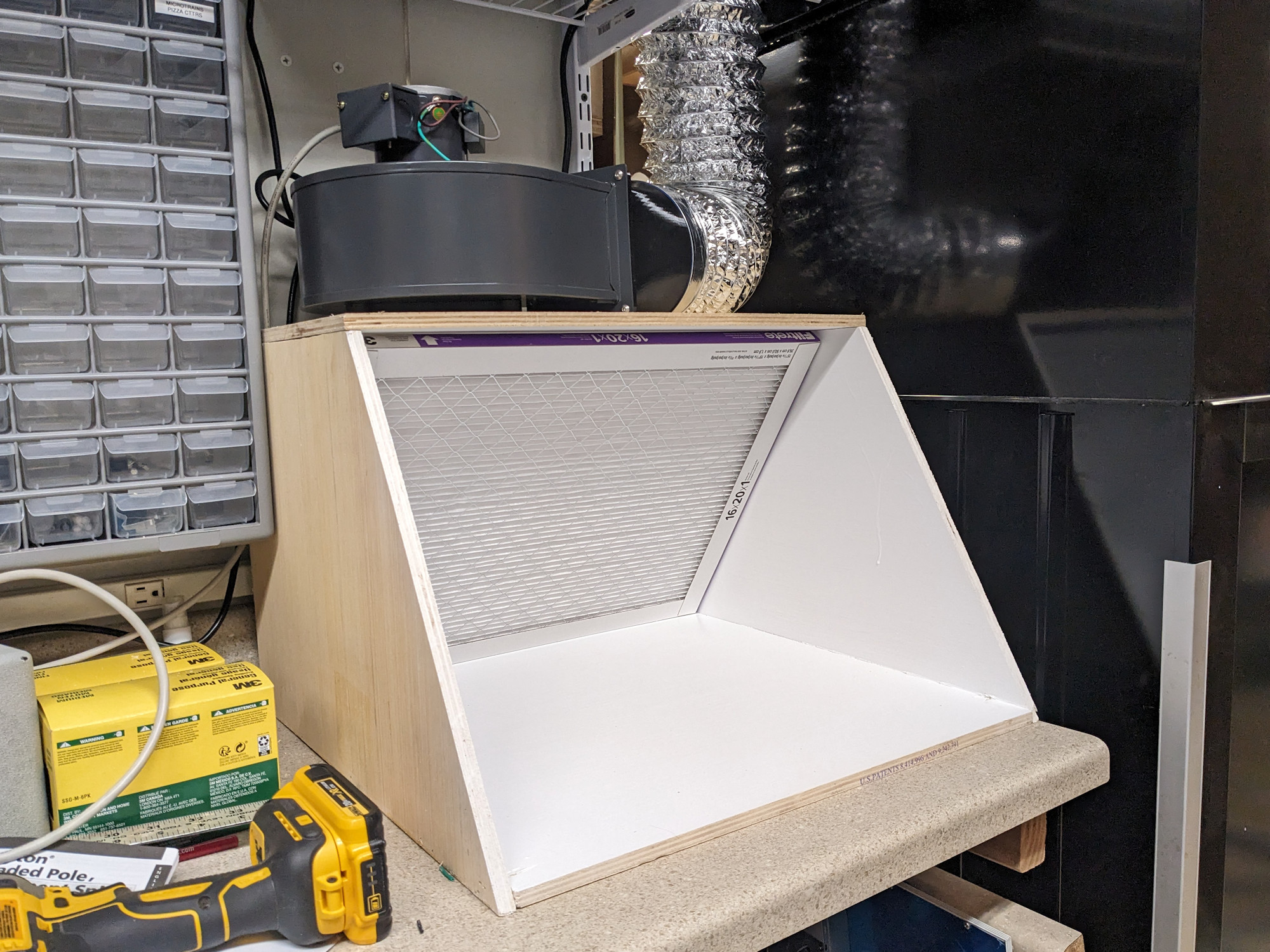One of the things I’ve been meaning to build since I started this layout was a new airbrush spray booth for the workbench. However, because it involved running a bunch of ductwork and punching a hole in the siding, it was always one of those things I kept putting off. The space on the modeling bench was set aside for it, but I never got around to actually building it.

Last week I decided the time was finally here. I’m starting to reach the end of “heavy construction” and will be needing to do fine painting sooner rather than later. Michael had recently built himself a spray booth, so I borrowed heavily from that in building mine.
The booth itself is constructed from 1/2 sanded plywood, cut and glued/nailed together. On the outside, it’s 14.5 inches high and 21 inches wide. The top extends out 12 inches from the back to hold a Dayton 1TDR3A squirrel cage blower. We both chose that blower because it moves a significant volume of air, provided relatively low static pressure, and it’s decently quiet. I’ve got 3D printed brackets that hold it to both the top plywood and connect its output to a standard 6 inch flexible duct. (With credit due, Michael designed the top mounting flange, and I did the output duct adapter.) I’ve posted both on Thingiverse if anybody wants to build their own.
In order to minimize static pressure, I ran 6 inch sheet metal ducting about 16 feet over to a spot where I could punch a hole through the outside wall. It’s remarkable how much better for static pressure 6 inch is over standard 4 inch, and since it was hidden above the layout’s upper valance anyway, it was no big deal. Right before it goes through the wall, it goes into a reducer to 4 inch duct, and then goes through the wall using a standard dryer vent.
Inside the spray booth, I just coated everything with a couple rounds of Krylon rattle can gloss white lacquer, and I left the outside as natural wood. A 16×20 filter fits perfectly inside, held in place using the lower rear corner and two clips on the top.

Now there’s just the matter of learning how to paint all over again. Last time I did it was ~32 years ago with an old external mix Badger. This time around is a brand spankin’ new Iwata NEO TRN 1, as Scott (Thornton) and Michael recommended.